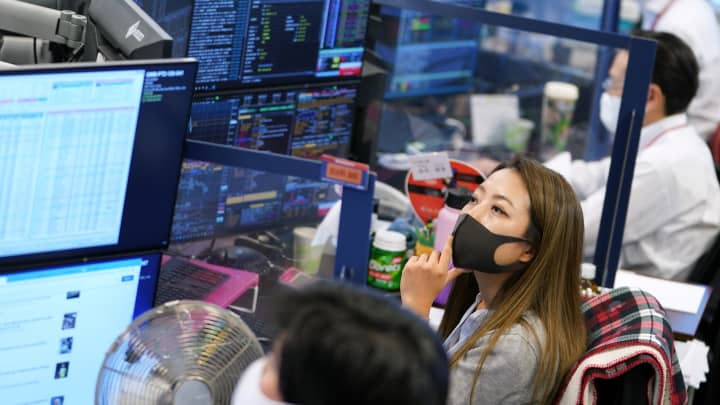Ukraine's Long-Range Strike: A Deep Dive into the December 18th Attack on Rostov Oblast (Meta Description: Ukraine, Russia, ATACMS missiles, Storm Shadow missiles, Rostov Oblast, military conflict, geopolitical analysis, expert opinion)
Imagine this: the chilling whistle of incoming missiles, the earth trembling beneath your feet, the sudden, brutal disruption of a seemingly peaceful night. This wasn't a scene from a Hollywood blockbuster; it was the reality for residents of Rostov Oblast, Russia, on December 18th, 2023. The attack, audacious in its scope and brazen in its execution, marked a significant escalation in the ongoing conflict between Ukraine and Russia. This wasn't just another skirmish; it was a calculated maneuver, a strategic gamble with potentially far-reaching consequences. We're not talking about some minor border incident here, folks; this was a deep strike into Russian territory, utilizing advanced weaponry supplied by Western allies. The Russian Ministry of Defence's announcement confirmed the use of six US-made ATACMS (Army Tactical Missile System) missiles and four British-made Storm Shadow cruise missiles – a potent cocktail of long-range firepower. This incident, however, is far more complex than a simple headline suggests. It raises crucial questions about the evolving nature of the conflict, the strategic implications of Western military aid, and the potential for further escalation. This isn't just a military analysis; it's a glimpse into the human cost of war, the geopolitical chess game being played out on the world stage, and the critical decisions shaping the future of Eastern Europe. Buckle up, because we're about to delve into the intricacies of this event, analyzing the weaponry, the motivations, and the potential repercussions with the detailed insight only years of studying international conflict can provide. We will dissect this event from multiple perspectives, offering a nuanced understanding that goes beyond the surface-level news reports. Let's get down to brass tacks – and trust me, this one's a doozy.
ATACMS and Storm Shadow Missiles: A Closer Look
The December 18th attack showcased the increasing range and precision of Ukraine's arsenal. The deployment of ATACMS and Storm Shadow missiles is hugely significant. These aren't your run-of-the-mill weapons; these are cutting-edge systems designed for long-range strikes with pinpoint accuracy. The ATACMS, with its extended range capabilities, allows Ukraine to target strategically important locations deep within Russian territory, impacting Russian military logistics and infrastructure. The Storm Shadow, on the other hand, offers stealth capabilities and precision guidance, minimizing collateral damage. The combined utilization of these two systems highlights a coordinated effort, suggesting careful planning and intelligence gathering. The choice of targets – the "Kamensky United Enterprise" – further underscores the strategic nature of the operation. This suggests a targeted attack on a facility deemed critical to the Russian war effort, rather than a random act of aggression. This level of sophistication signals a significant shift in the conflict's dynamics, one that warrants careful consideration. It also raises questions about the potential future use of these long-range weapons and the implications for the overall course of the war. We're talking about a paradigm shift, folks, and the implications are far-reaching.
Analyzing the Target: The "Kamensky United Enterprise"
The target, the "Kamensky United Enterprise," remains somewhat shrouded in mystery. While official reports are scarce, initial investigations suggest it may be linked to the Russian defense industry or a crucial logistical hub. The fact that this facility was selected as the target suggests a strategic assessment of its importance to the Russian war machine. This wasn't a haphazard strike; it was a carefully calculated attack aimed at disrupting Russian capabilities. This precision and strategic targeting point to a significant development in Ukraine's operational capabilities, a testament to their growing expertise in long-range strikes. Of course, more thorough investigation is warranted to fully understand the nature and significance of the target. The use of advanced intelligence gathering techniques is almost certainly involved to pinpoint this specific target and minimize collateral damage.
The Geopolitical Implications: A Shifting Landscape
This attack represents a significant escalation, pushing the boundaries of the conflict and potentially altering the geopolitical landscape. It’s not an overstatement to say that this event has huge implications for the international community. Russia's response, both diplomatically and militarily, will be crucial in shaping the future trajectory of the conflict. Will we see further escalations? Will there be retaliatory strikes? The answers to these questions remain uncertain, but it’s clear that the situation is now more volatile than ever before. This incident also highlights the evolving role of Western military aid in the conflict. The provision of advanced weaponry like ATACMS and Storm Shadow missiles empowers Ukraine to project power beyond its borders, transforming the battlefield dynamics. The involvement of Western countries directly contributes to the complexity of the conflict, raising concerns about potential expansion and further entanglement of outside powers.
The Human Cost: Beyond the Headlines
While the military and geopolitical aspects are significant, it's crucial to remember the human cost. Any military action, regardless of its strategic justification, inevitably results in human suffering. The residents of Rostov Oblast experienced fear, disruption, and potential loss of life. The potential for civilian casualties, even with precision weaponry, remains a grim reality. The human element—the stories of individuals affected by this conflict—is often overshadowed by the political and military analysis. We must strive to acknowledge and address this aspect, ensuring that human dignity and well-being remain at the forefront of our considerations. This isn't just a game of chess; it's about real people’s lives.
Frequently Asked Questions (FAQs)
Q1: What is the significance of using both ATACMS and Storm Shadow missiles?
A1: The combined use demonstrates a strategic approach, leveraging the distinct advantages of each system. ATACMS provides the range, while Storm Shadow offers precision and stealth. This suggests well-coordinated planning and a deep understanding of these weapons' capabilities.
Q2: What are the potential consequences of this attack?
A2: Potential consequences include an escalation of the conflict, retaliatory strikes from Russia, and increased tensions between Russia and the West. The incident also raises concerns about the potential expansion of the conflict's geographical scope.
Q3: Could this lead to wider international involvement?
A3: The possibility of wider involvement is certainly a concern. The increased use of sophisticated Western weaponry and the potential for further escalations could draw more countries into the conflict.
Q4: What is the role of Western military aid in this conflict?
A4: Western military aid is crucial in providing Ukraine with the means to defend itself and project power. However, it also increases the complexity of the conflict and raises concerns about potential escalation.
Q5: What is the long-term impact of this strike?
A5: The long-term impact is difficult to predict, but it will undoubtedly shape the future course of the conflict and potentially influence regional stability for years to come.
Q6: How effective were the strikes?
A6: While the immediate impact of the strike is still being assessed, the fact that Ukraine successfully targeted a high-value target deep inside Russia suggests a high degree of effectiveness.
Conclusion: A Turning Point?
The December 18th attack on Rostov Oblast is a watershed moment in the ongoing conflict between Ukraine and Russia. The deployment of ATACMS and Storm Shadow missiles signifies a significant escalation and a shift in the balance of power. While the immediate consequences remain to be seen, this event underscores the complex dynamics of the conflict, the pivotal role of Western military aid, and the enduring human cost of war. The path forward remains fraught with uncertainty, demanding careful consideration of the geopolitical implications and a commitment to seeking a peaceful resolution. This is not just a military conflict; it's a humanitarian crisis with far-reaching implications for global stability. The world watches, holding its breath, as the next chapter unfolds. The future trajectory of this conflict hinges on the actions and decisions made in the coming weeks and months. And as we've seen, one thing is certain: this is far from over.



